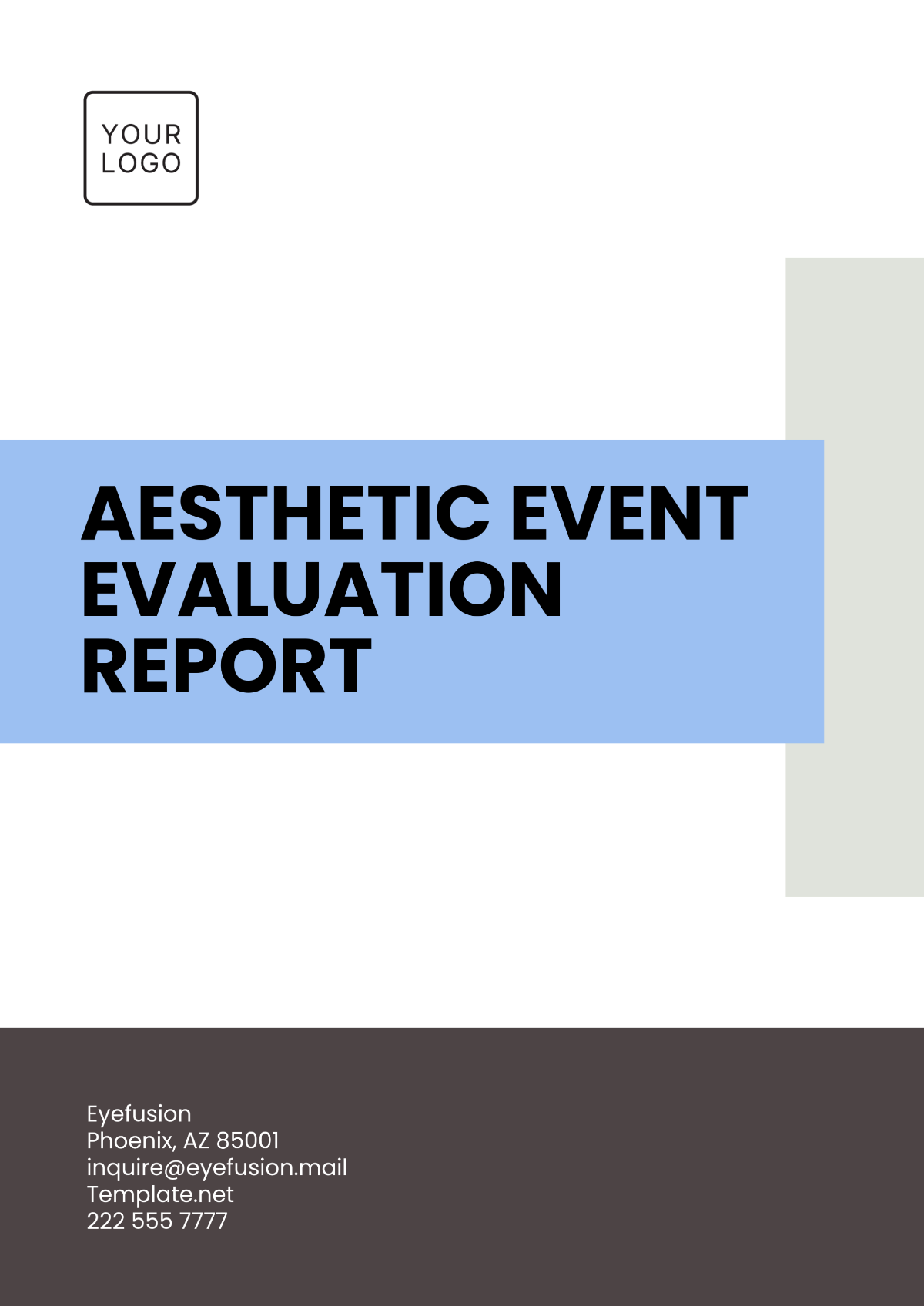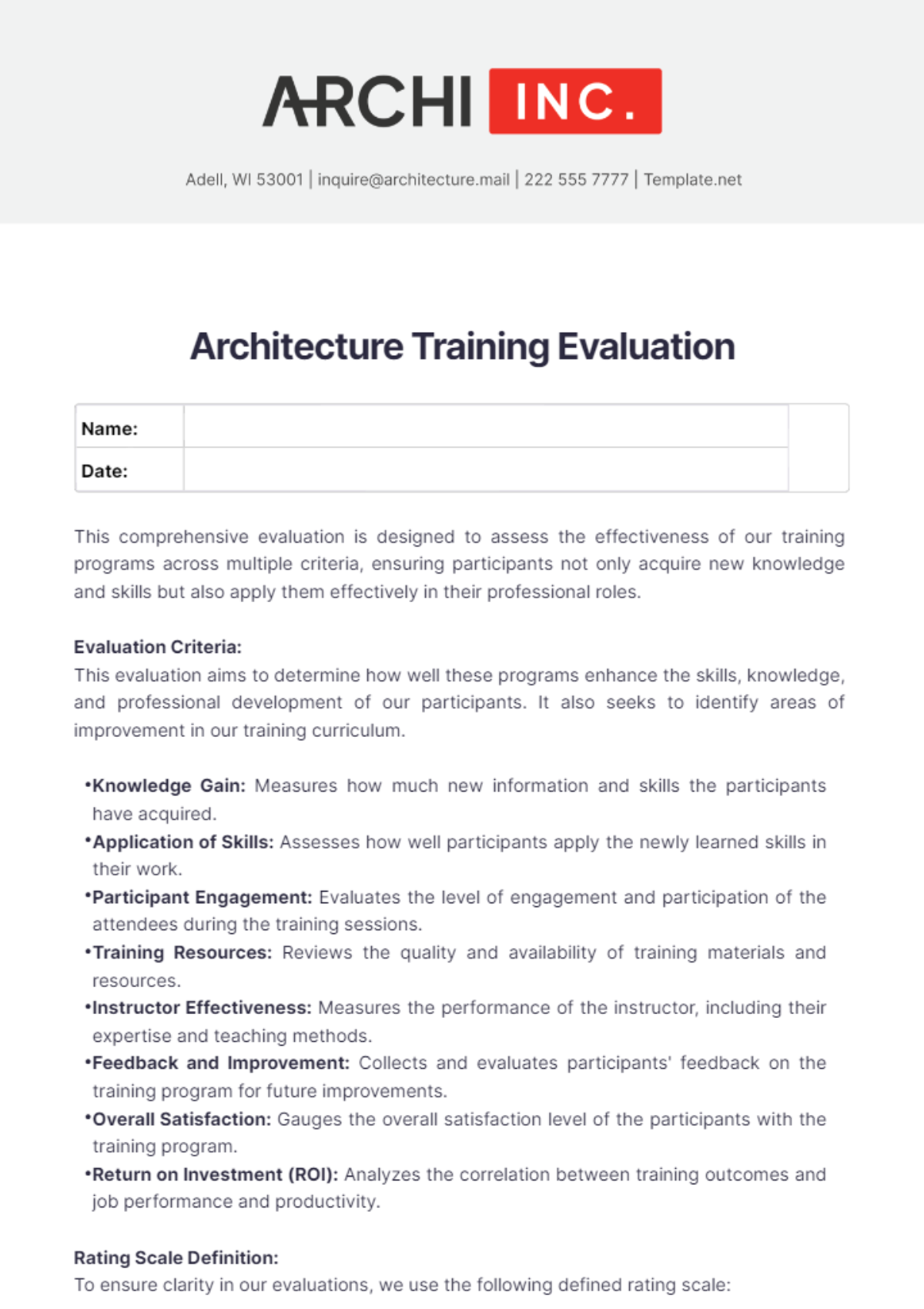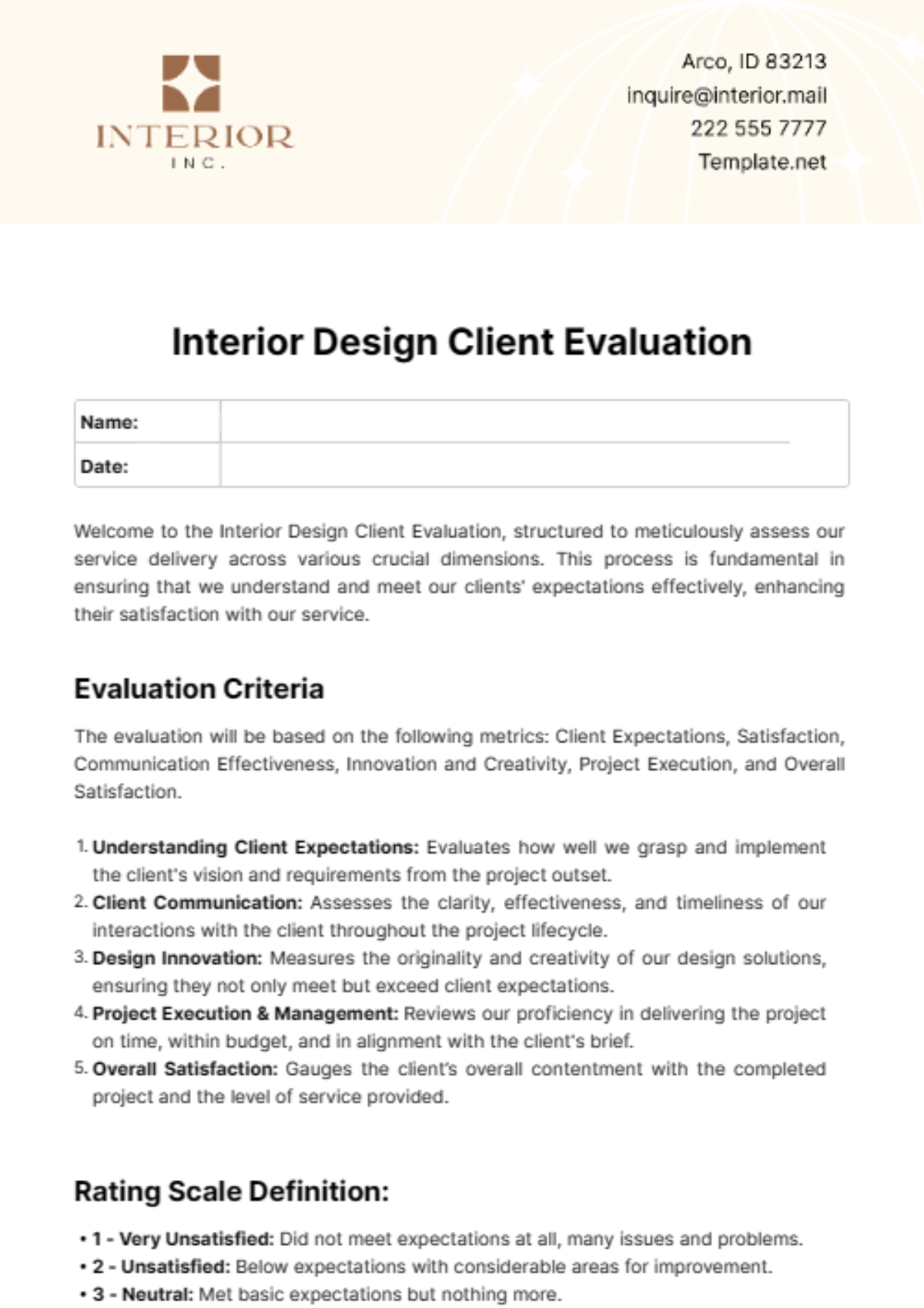Free Interior Design Quality Evaluation
Improve your interior design review process with Template.net's Interior Design Quality Evaluation Template. Expertly crafted, fully editable, and customizable, this template streamlines evaluations seamlessly. Editable in our Ai Editor Tool, it empowers designers to maintain high standards efficiently. Enhance the accuracy and depth of your project assessments today, ensuring every space reflects excellence. Unlock your design potential with precision and ease!






























